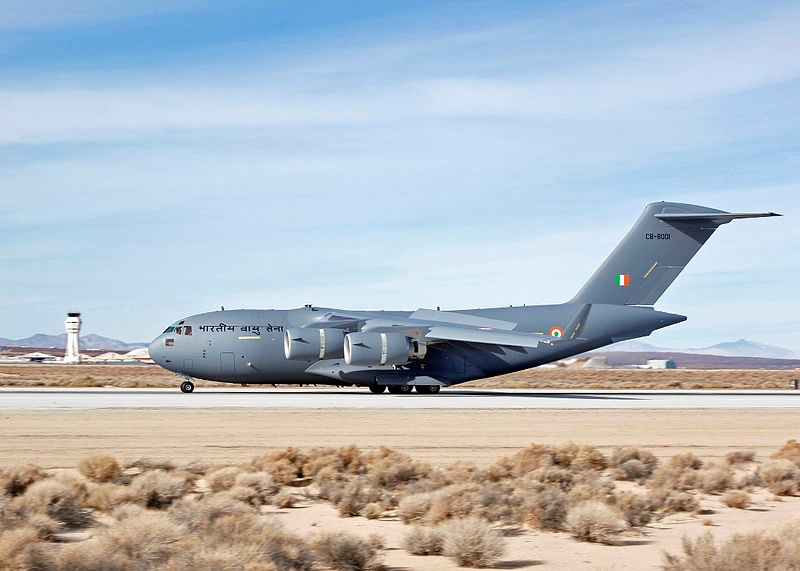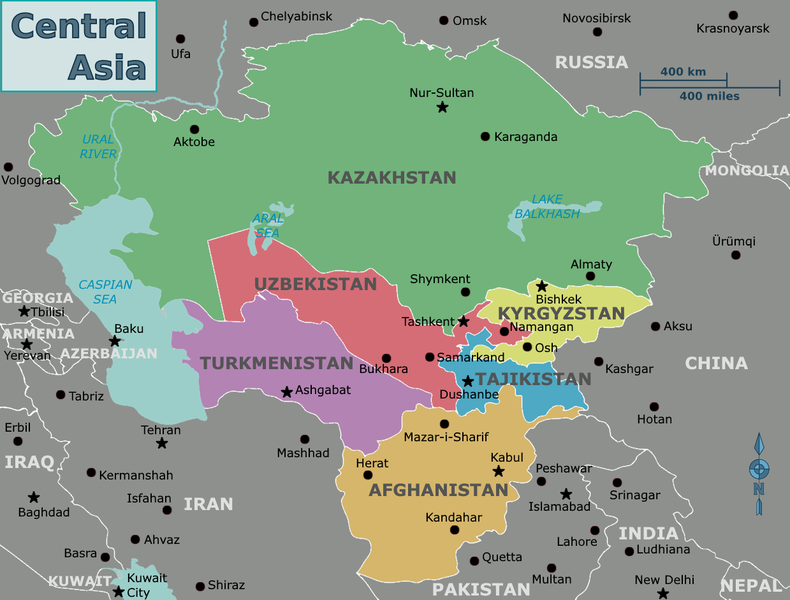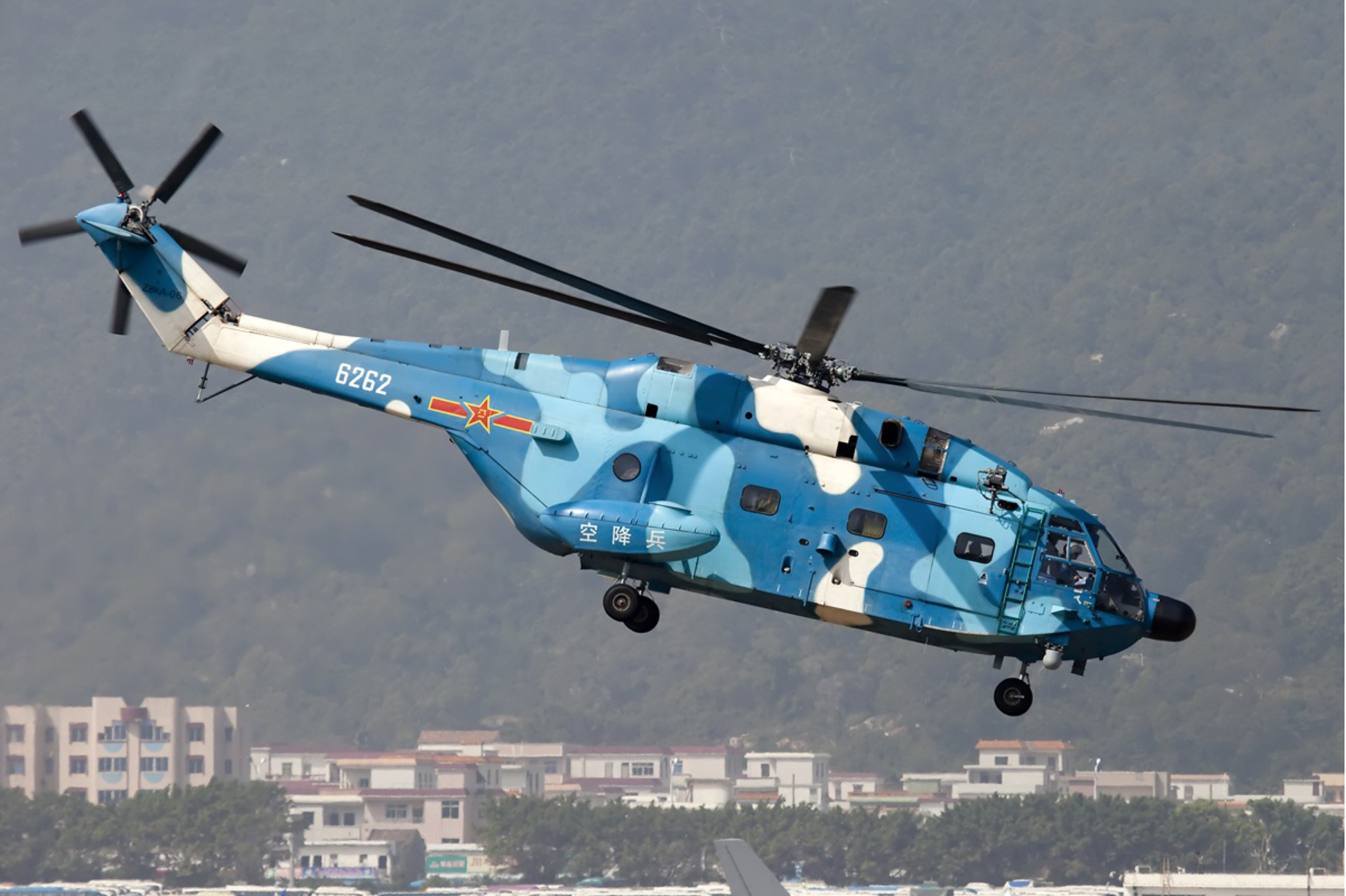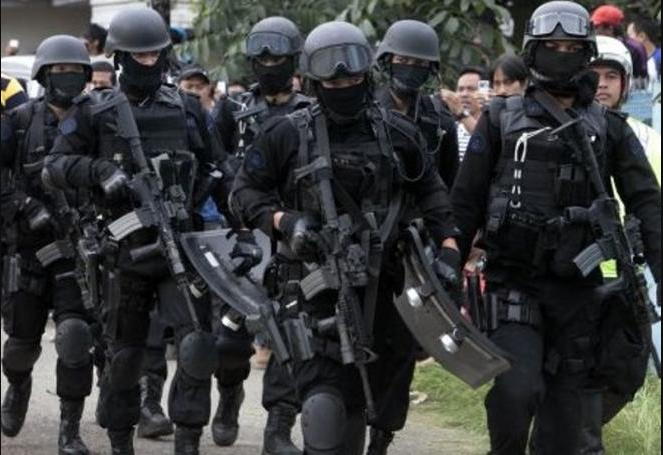
Indian Air Force C-17.
“The effort was a real-time demonstration of the inherent heavy-lift capability of the Indian Air Force.”
Indian defense officials continue to make improvements to roads and other infrastructure in areas near the Indian-Chinese border to facilitate operations in the event of a war with China. The accompanying excerpted articles provide a look at how Indian forces are training for additional scenarios outside of the improvements in the border areas.
The article from independent news magazine India Today reports on a recent airlift exercise by the Indian Air Force and Army. The exercise took place to assess India’s logistics supply chain as the “Indian armed forces are preparing for another winter of enhanced deployment of over 50,000 troops in Ladakh.” According to the article, the exercise involved C-17, IL-76, and An-32 transport aircraft operating out of the country’s Western Air Command.
The article from India-based independent English-language news website The Print reports on an exercise carried out by the “Shatrujeet (airborne) brigade” in early November. The exercise took place in the north of the Union Territory of Ladakh and involved members of the brigade being “inserted to a drop zone at an altitude of more than 14,000 feet.” The article notes that the soldiers had been acclimated to the change in elevation in Ladakh prior to the exercise and that the exercise took place in order to “validate rapid response capabilities and seamless integration.” This is important because ground travel is relatively slow up to the Tibetan Plateau where the terrain is vulnerable to rock slides and other obstacles. Future flashpoints or confrontations with China may require a rapid response capability that only airlift can provide until follow-on forces arrive.
Source:
Abhishek Bhalla, “Operation Hercules: Army, IAF prepare for winter deployment amid Ladakh standoff,” India Today (an independent news magazine), 17 November 2021.
The Indian Army and Air Force carried out a joint exercise to assess their logistics supply chain. This exercise was held at a time when the Indian armed forces are preparing for another winter of enhanced deployment of over 50,000 troops in Ladakh amid continuing tensions with China…
Temperatures have begun to drop and will fall to minus 30-40 degrees during peak winter. The Indian forces are geared up for enhanced deployment in the harsh winter for a second successive year.
The exercise named ‘Operation Hercules’ was undertaken by the Indian Air Force and Indian Army on November 15 with transport aircraft of the IAF being pressed into action.
The platforms utilised for the airlift were C-17, IL-76 and An-32 aircraft, which took off from one of the forward bases of Western Air Command…
Source: “Army conducts airborne exercise in eastern Ladakh to check rapid response along LAC,” The Print (independent English-language news website from India), 1 November 2021. https://theprint.in/defence/army-conducts-airborne-exercise-in-eastern-ladakh-to-check-rapid-response-along-lac/760296/
The Indian Army’s Shatrujeet brigade is conducting an airborne exercise along the northern borders in eastern Ladakh to validate its rapid response capabilities, sources said on Monday…airborne troops of the Army’s Shatrujeet brigade were inserted to a drop zone at an altitude of more than 14,000 feet as part of the exercise, the sources mentioned.
These pre-acclimatised troops along with specialist vehicles and missile detachments were transported through C-130 and AN-32 aircraft from five different mounting bases to validate inter-theatre move, precision stand-off drops, rapid grouping and the capture of designated objectives with speed and surprise, they said.
…The exercise also involved combat free fall jumps and integrated battle drills by airborne forces, mechanised columns and attack helicopters, to validate rapid response capabilities and seamless integration…
Image Information:
Image: Indian Air Force C-17.
Source: https://commons.wikimedia.org/wiki/File:IAF-C-17.jpg
Attribution: Public Domain



